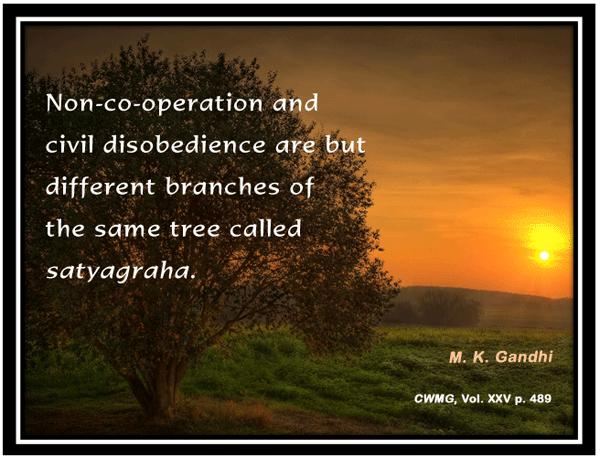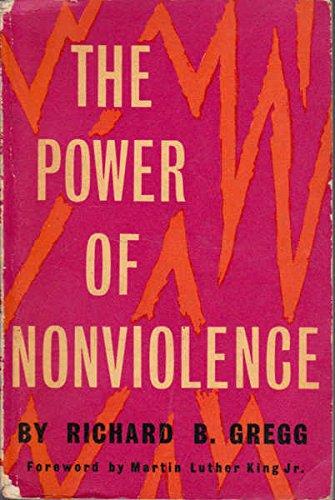by Mohinder Singh

Map of Gandhi’s salt march courtesy indiansaltmarch.weebly.com
Editor’s Preface: Gandhi’s Salt March was one of his most significant nonviolent civil resistance campaigns, yet without knowing some of the historical significance of salt his symbolic gesture of gathering a handful cannot be understood. For further reflections on Gandhi and salt see also the article ”Salty Gandhi” by William J. Jackson posted here. The note at the end has further information and acknowledgments. JG
The German scholar M.J. Schleiden in his book Das Salz (Leipzig, 1875) contended that there was a direct correlation between salt taxes and despots. Athens did not tax salt, but China and Mexico were salt-taxing tyrannies. Using the salt-taxation yardstick, British rule in India was patently despotic.
Salt taxation originated in China. The earliest known written text on salt regulation is the Chinese Guanzi: On Weighing and Balancing Economic Factors (c. 300 B.C.). It argued that people cannot do without salt, and in their desperation would be willing to pay a high price; it states ‘Coastal states dependent upon the resources of the ocean should cautiously and reasonably establish a tax on salt.’ In due course, this proposal became the adopted policy of the Chinese emperors and the first known instance of a state-controlled monopoly of a vital commodity. The revenues from salt taxation were used to build not only armies but also defensive structures such as the Great Wall. At one time over half of the state’s revenue was derived from salt. Any popular manifestation of resentment against it was handled with an iron fist.
Read the rest of this article »
by M. K. Gandhi

Poster image courtesy mkgandhi-sarvodaya.blogspot.nl
Editor’s Preface: Gandhi did not expound his philosophy of satyagraha in any organized way; there are scattered discussions, remarks and definitions throughout his work. Although there have been anthologies of some of these writings, such as Schocken Books’s, M. K. Gandhi Non-Violent Resistance (New York, 1961), the three extracts below from journals that Gandhi edited have not been anthologized. Please consult the note on the text at the end for an explanation of our editing procedure and acknowledgments. JG
[Extract One] The principles of satyagraha, as I know it today, constitute a gradual evolution. Satyagraha differs from Passive Resistance as the North Pole from the South. The latter has been conceived as a weapon of the weak and does not exclude the use of physical force or violence for the purpose of gaining one’s end, whereas satyagraha has been conceived as a weapon of the strongest and excludes the use of violence in any shape or form.
Read the rest of this article »
by M.K. Gandhi

Poster art courtesy quotefancy.com
Editor’s Preface: This is the text of a speech, which Gandhi delivered in 1916. It is increasingly being cited as a key statement of his economic philosophy, most recently by Anthony J. Parel in his influential study, Gandhi’s Philosophy and the Quest for Harmony (Cambridge: Cambridge University Press, 2006, p. 81). It continues our series of making available important documents by Gandhi that we see increasingly cited in the literature. Please click on Gandhi’s byline above for easy access to our other postings, and please also see the Endnotes, and the note on the text, for acknowledgments and further information. JG
‘Does economic progress clash with real progress?’ When I accepted Mr. Kapildeva Malaviya’s invitation to speak to you upon the subject of this evening, I was painfully conscious of my limitations. (1) You are an economic society. You have chosen distinguished specialists for the subjects included in your syllabus for this year and the next. I seem to be the only speaker ill fitted for the task set before him.
Frankly and truly, I know very little of economics, as you naturally understand them. Only the other day, sitting at an evening meal, a civilian friend deluged me with a series of questions on my crankisms. As he proceeded in his cross-examination, I being a willing victim, he found no difficulty in discovering my gross ignorance of the matter. I appeared to him to be handling with a cocksureness worthy only of a man who knows not that he knows not. To his horror and even indignation, I suppose, he found that I had not even read books on economics by such well-known authorities as Mill, Marshall, Adam Smith and a host of such other authors. (1) In despair, he ended by advising me to read these works before experimenting in matters economic at the expense of the public. He little knew that I was a sinner past redemption. My experiments continue at the expense of trusting friends. For, there come to us moments in life when about some things we need no proof from without. A little voice within us tells us, ‘You are on the right track, move neither to your left nor right, but keep to the straight and narrow way.’ With such help we march forward slowly indeed, but surely and steadily. That is my position.
Read the rest of this article »
by Richard B. Gregg

Dustwrapper art, 1960 James Clarke & Co edition, courtesy abebooks.com
Editor’s Preface: Richard Gregg (1885-1974) is often credited with being the first American theorist of nonviolent civil resistance (satyagraha). While a student at Harvard in the early 1920s he attended a guest lecture about Gandhi and Gandhi’s nonviolence theories. Upon graduating in 1925 he set sail for India, and lived for several years in various Gandhian ashrams. In 1934 he published the work he is best known for, The Power of Non-violence. The book was to have a great influence on Martin Luther King, Jr. and other of the civil rights leaders, and has remained an essential text in the study of nonviolence, and the influence of nonviolence on American politics. Gregg’s Wikipedia page deserves expanding, but has, nonetheless, some useful links. The Quaker website quakersintheworld.org also has a brief biography. This article is dated c. 1963. Please see the note at the end for acknowledgments, and further textual details. JG
On the faculty of the University of Wisconsin there is a psychiatrist, Dr. Carl R. Rogers, who has spent years giving counsel to those who are in personal emotional or mental trouble and cannot seem to solve their problems unaided. As a result of his professional experience he has come to believe that nobody will change his habits of thinking, feeling or acting until something happens to change his own picture or concept of himself. Other things being equal, for example, a student will give up preparing to become a journalist and begin to study for the law only when he can see himself as a practicing lawyer. A thief will abandon that way of life only if he can see himself as happier in a different way of life and know how he can attain it. For most people, the matter of self-regard is of primary importance.
Read the rest of this article »
by Rasoul Sorkhabi

Dustwrapper art courtesy Shambhala Publications; shambhala.com
Mahatma Gandhi was assassinated in New Delhi in 1948 (sixty years ago as of this writing) and the renowned Trappist monk and author Thomas Merton was killed in a tragic accident in 1968 (forty years ago). These anniversaries are valuable opportunities to reflect on the legacies, works, and teachings of these two great men of peace. Gandhi has influenced many minds and movements of the twentieth century. In this article, we review Merton’s impressions of Gandhi and how they are helpful for our century and generation.
Thomas Merton, born in 1915, was 46 years younger than Gandhi. Merton spent the first two decades of his life in France, UK and USA. In 1939, he received his MA in English literature from Columbia University, and the following year accepted a teaching position at the Franciscan run Saint Bonaventure University in southwest New York State. In 1942 he decided to become a priest and entered the Abbey of Gethsemane, a Trappist monastery in Kentucky; the Trappist are strict observance Franciscans, and having taught at St. Bonaventure might have influenced his decision. Merton, or rather Father Louis as he was to be called at Gethsemane, lived the rest of his life there, a quiet and contemplative life in an inspiring natural environment. He kept journals and published innumerable essays, poems, and books. His autobiography, The Seven Storey Mountain, published in 1948 became a best seller. In the 1960s, Merton was attracted to Eastern religious thoughts and traditions, including Gandhi’s ideas.
Read the rest of this article »
by Surur Hoda

Dustwrapper art courtesy Harper Publishing; harpercollins.com
Gandhi’s visions of Gram Swaraj, self-sufficient but inter-linked village republics with decentralised small-scale economic structures and participatory democracy, left him immediately at odds with those in and outside the Indian National Congress who were seeking to develop India into a modern industrial nation state. To Gandhi, political freedom was merely the first step towards attainment of real independence, namely social, moral and economic freedom for seven hundred thousand villages. ‘If the villages perish India will perish,’ he had said. But the majority of academically trained, modern economists called his vision ‘retrograde’. Some extremists even described it as ‘reactionary’ or ‘counter-revolutionary’ and accused him of aiming to put the clock back.
Many of those who admired Gandhi’s skill in leading the struggle for national liberation reluctantly tolerated his economic views as the price to pay for his political leadership. They were sold on the concept of large-scale urban industrialisation and mass production. They failed to understand Gandhi’s economic insights and criticised him by saying ‘Whatever Gandhi’s merit as “Father of the Nation”, he simply does not understand economics.’
Yet almost a quarter of a century after Gandhi assassination, the German born economist E. F. Schumacher, when delivering the Gandhi Memorial Lecture at the Gandhian Institute of Studies at Varanasi (India) in 1973, described him as the greatest ‘People’s Economist.’ In his opening remarks, Schumacher told this story: ‘A famous German conductor was once asked who he considered the greatest of all composers. “Unquestionably Beethoven” was his answer. He was then asked, “Would you not even consider Mozart?” He said, “Forgive me. I thought you were referring to the others.”’ Drawing a parallel Schumacher said the same question might he put as to who was the greatest economist. ‘Unquestionably Keynes,’ he would reply, and be immediately asked, ‘Would you not even consider Gandhi?’ His answer would be, ‘Forgive me, I thought you were referring to the others.’
Read the rest of this article »
by William J. Jackson

Gandhi gathers salt and breaks law; courtesy Wikipedia.com
Why Symbolism of Salt to Understand a Trouble Dissolver?
Alchemy is a kind of learning, a repository of old wisdom. It includes observations about elements, experiments with materials and aspects of the universe, as well as studies about processes and psyches. The imagination of curious souls and observers of life, active over the centuries, has experimented and found meanings in chemical and psychic interactions and transformations.
Despite modern science’s new technologies and ways of learning about the universe at various levels—micro, macro, meso—there are still valuable lessons to be learned from the ideas gathered under the term “alchemy” over the centuries. Shakespeare and other great poets are still interesting 500 years later—his grasp of human nature, his use of metaphorical language, and his observations on experience are still valuable, and this is true also for the metaphors found in alchemy.
James Hillman’s Alchemical Psychology is a brilliant contribution to understanding the richness of alchemy. In this book he garners and examines some valuable insights from the explorations of alchemy, and relates them to the processes of the human psyche. Many of the ideas in this paper are derived from Hillman’s inspiring work. I quote some points directly, others I paraphrase and elaborate on, extending them with my own examples and explicating and exploring their implications. Relating these ideas to Gandhi’s work is my idea, not Hillman’s. (1)
Read the rest of this article »
by Devi Prasad

Schoolchildren dressing as Gandhi to commemorate his 146th birthday; courtesy newindianexpress.com
Editor’s Preface: This previously unpublished essay by Devi Prasad is another in our series from the IISG archive, Amsterdam. It is well to bear in mind that Prasad lived as a child at Tagore’s school, discussed in the article, and that he was later asked by Gandhi to teach in one of his ashrams. His knowledge of Gandhi’s education system, therefore, was uniquely first-hand. Please consult the notes at the end for archival reference, acknowledgments, and biographical information. JG
At the centre of Gandhi’s many concerns about social and political issues, there are two things that remained consistently predominant throughout his life. Firstly, a revolt against the education system that was given to, nay, imposed upon India by the colonial rule; and secondly, a powerful urge to find an appropriate approach and method of imparting education to all the children and adults of the country.
Read the rest of this article »
by William J. Jackson

Taoist compassion artwork; courtesy justgeneo.wordpress.com
The gently persuasive way—not beating others into submission, not bludgeoning, not eye-for-eye and tooth-for-tooth vengeance, but turning the other cheek, going the extra mile, giving more than is asked, killing the others’ “foeness” with kindness—is an ancient approach. It includes longsuffering, even self-sacrifice, loving your enemy, praying for those who persecute you. This is a Christian teaching, and is also ancient Taoist wisdom philosophy.
The Taoist classic text Tao Te Ching includes a number of lines about humility and not lording it over others, observations of patterns already recognized as very old wisdom 2500 years ago. TTC Chapter 68 is about the virtue of not contending; it speaks of “intelligent non-aggressiveness” and the “virtue of non-contention.” In Taoist philosophy one who accepts the “left tally, the debtor’s tally” (a symbol of inferiority in an agreement, getting the short end of the stick), humbly accepts the less prestigious position, which in the long run is the appearance the victor should have. To flaunt one’s victory sets a tone that brings resentment and reprisals. “Those who dispute are not skilled in Tao.” (TTC Chapter 81) Water flows downhill, and does not fight gravity. (1)
Read the rest of this article »
by Devi Prasad

Gandhian civil resistance poster; courtesy peacetopia.com
To begin with I shall discuss some of the commonly used terms in connection with nonviolent action against oppression, and which are often mistakenly understood to be the same as the Satyagraha practiced and advocated by Gandhi. This is to try to point out the differences between the concepts these terms represent and how they are not quite the same as the concept of Satyagraha. These terms are passive resistance, non-cooperation, direct action, civil disobedience and non-resistance. My aim is not to minimise, even to the slightest degree, the merits, uses and strength of these methods, but to point out that in contrast to any of them Satyagraha is a complete philosophy, as well as the technique of fundamental social change. Whereas the philosophy of Satyagraha implies a holistic approach to both long term as well as immediate issues facing humankind, the practice of the above-mentioned concepts is, by definition, limited to particular situations without being necessarily related to other social or political problems.
Read the rest of this article »














